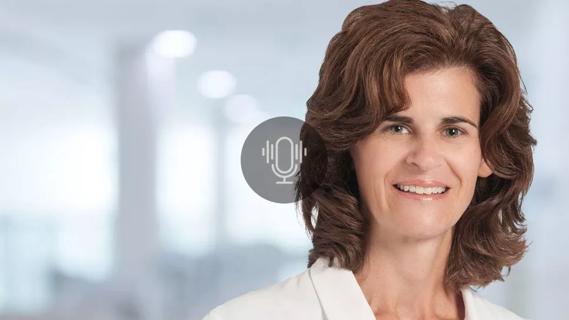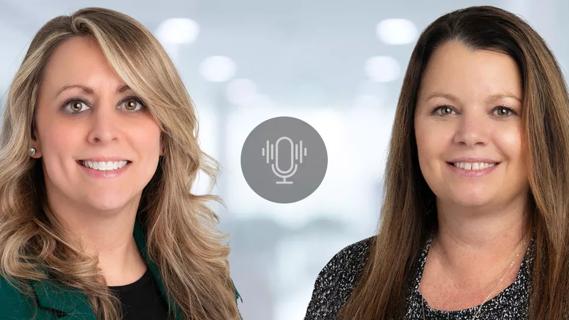Advertisement
An exhausted mother of a patient in Fairview Hospital’s 24-bed Pediatric Medical-Surgical Unit shared her distress with a nurse. “I just want my baby to sleep,” said the mother, whose baby had hyperbilirubinemia.

An exhausted mother of a patient in Fairview Hospital’s 24-bed Pediatric Medical-Surgical Unit shared her distress with a nurse. “I just want my baby to sleep,” said the mother, whose baby had hyperbilirubinemia. Frequently, when the baby would fall asleep, a nurse would come in and take vital signs and wake up the baby. So the nurse suggested she check vitals after each breastfeeding, then put the baby to bed in the Isolette®.
Advertisement
Cleveland Clinic is a non-profit academic medical center. Advertising on our site helps support our mission. We do not endorse non-Cleveland Clinic products or services. Policy
This easy solution came about thanks to a new program in the unit called “Take 5.” When nurses begin their shifts, they take five minutes to sit down and talk with patients and their families. The mother of the baby with jaundice communicated her frustrations during a “Take 5” discussion.
“The whole purpose is to let patients feel that nothing in the moment matters except them,” says Nancy Dorenkott, BSN, RN, CPN, who developed the program with fellow bedside nurse Ashley Jacob, BSN, RN. “It’s about authentic attention—attending to someone without distractions.”
The “Take 5” process is simple: Nurses introduce themselves, then share the plan of care for the shift. Next, nurses ask what the family would like to happen during the upcoming shift. They also ask about the patient’s and family’s goals and expectations. Finally, nurses ask, “Is there anything we can do to make your hospital stay easier?”
“It’s amazing the simple requests that come out,” says Dorenkott. One family asked if they could bring prayer carpets to the room. Another mother asked if she could learn how to operate the Isolette so she could contribute to her baby’s care. “You can learn so much about that patient and their needs in just those few minutes,” says Dorenkott, a 28-year veteran in the Pediatric Medical-Surgical Unit at Fairview.
She and Jacob devised “Take 5” after researching philosophies on relationship-based care by Marie Manthey. Theories from the renowned nursing thought leader are integral to The Zielony Institute’s Nursing Professional Practice Model, along with Dr. Patricia Benner’s Thinking in Action and Peter Senge’s Thinking and Serving Leadership Philosophy. “Human compassion is essential for patient healing,” says Dorenkott. “It’s right up there with medical technology and innovations.”
Dorenkott and Jacob presented the “Take 5” program to nurses, PCNAs, an LPN, child life specialists and secretaries at a unit Shared Governance meeting in July 2012. They created a poster explaining how the program fosters relationship-based care, and a handout that outlines the “Take 5” process. The program was implemented a month later.
Now, the 21 nurses on the unit document when they sit down face-to-face with patients and families by noting a “5” on each patient’s hourly rounding log. Dorenkott and Jacob placed “5”s around the unit to remind nurses to take time with patients.
Since instituting the program, Press Ganey scores have steadily increased. Overall Assessment Scores went from 46 percent in the second quarter of 2012 to 95 percent in the first quarter of 2013. Nursing Care scores rose from 63 percent in the second quarter of 2012 to 90 percent in the first quarter of 2013. While there’s no evidence that those improvements are directly related to “Take 5,” Dorenkott and Jacob are convinced it’s had an impact.
Advertisement
“By listening to patients and families, you really focus on what’s being said and let that guide your care,” says Dorenkott. “It creates better outcomes.”
Advertisement
Advertisement

Education, training and reporting can help reduce workplace violence in healthcare

Wound, ostomy and continence nurses provide skin assessments, wound prevention measures, treatment and education

Virtual model enables around-the-clock management of common acute conditions

Resources, education, mentoring help nurses segue to formal leadership roles

Holistic nurses work across all nursing specialties to support patients and caregivers

Nurses play pivotal role in patients’ ability to recover in the comfort of their own homes

Advocating for patient safety is imperative in fast-paced surgical settings

Advice for those pursuing a WOC nursing career